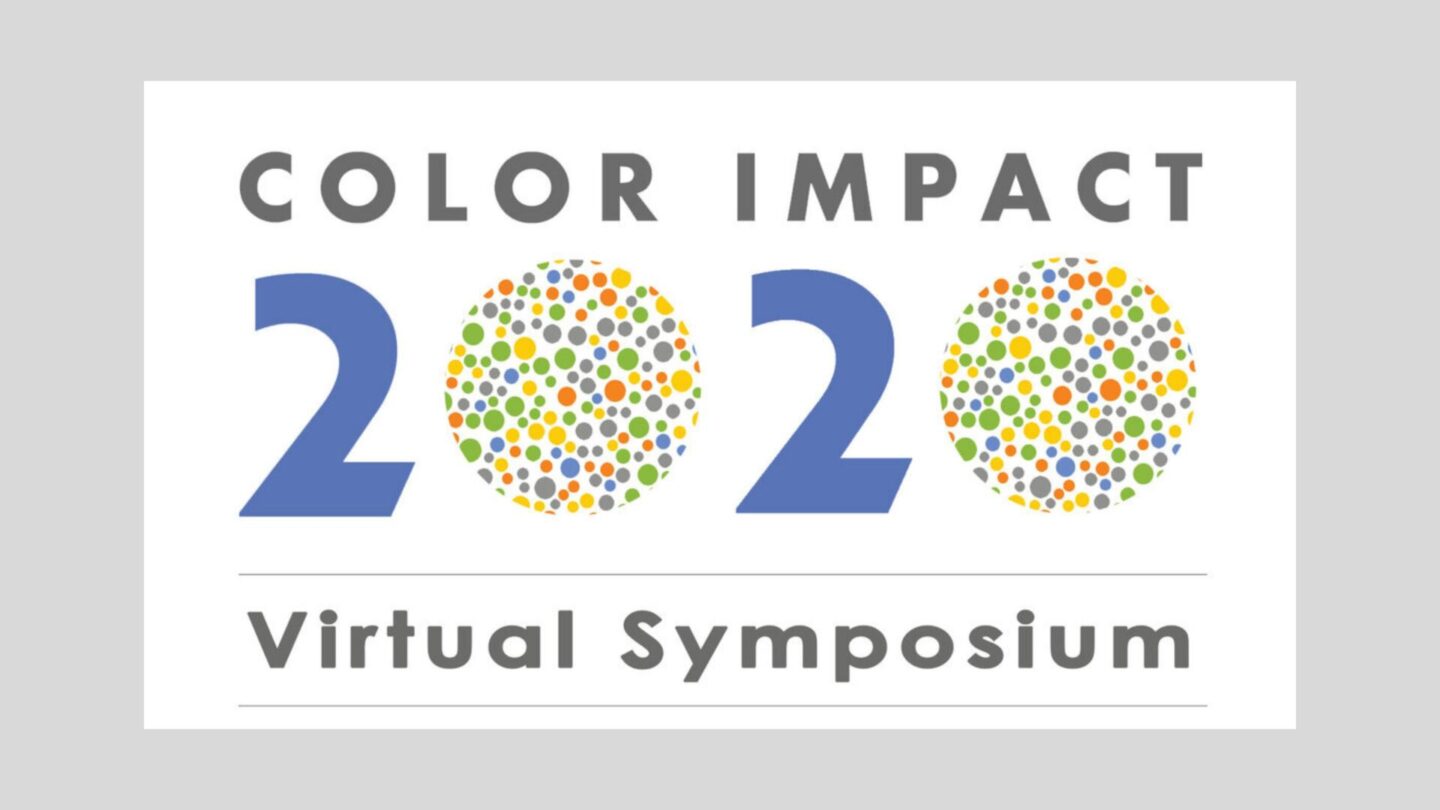
An comprehensive report on the Color Impact 2020 Symposium by Dr Kathleen A. Edwards has been published in Color Research & Application, 45 (5), pages 968-969. Here’s a link to the report.
Color Impact 2020 was originally planned as a conference to be held at Yale University; however, due to Covid-19, the conference became an online symposium. I submitted three abstracts for Color Impact 2020 and after a peer review process, all three were accepted. One paper was selected for participation in the Point/Counter Point debate and the final version of this paper, entitled ‘A defense of traditional colour theory: Exploring the impact and relevance of ontology and epistemology’, was submitted to the organizing committee in April 2020.
The key outcome from the Color Impact 2020 Point/Counter Point debate focused on the need for colour education to evolve. This echoed much earlier calls to address shortcomings in colour curriculum, including ‘Black-listed: Why colour theory has a bad name in 21st century design education’; a paper I presented at the 2nd International Conference on Design Education in 2010 – available via this link.
The Point/Counter Point debate featured two short 5-minute presentations by Maggie Maggio and myself, and a 20-minute Q&A session, moderated by Robert Hirschler. We discussed the relevance of traditional colour theory and how this branch of theory has evolved well beyond notions about “primary colours”. It was agreed by all participants that colour theory continues to evolve; however, a key issue is the prevalence of numerous constructs that emerged primarily within traditional colour theory and which have become a common lingua franca among artists, designers and professionals working with colour application.
A version of my Color Impact 2020 paper was published in Color Research & Application: ‘Traditional colour theory: A review’ (here’s a link) and this also formed the basis of my chapter ‘Traditional color theory’ in the Encyclopedia of Color Science and Technology (here’s a link to the chapter).
Note – David Briggs wrote a summary of Color Impact 2020 which was published on his self-published website and circulated via newsletters. David’s summary contained inaccuracies about my professional status and misconstrued my contribution to the Point/Counter Point debate. In response to my request to amend these, David did so on November 5 – but only partially.
David used the language of misogyny (“she teaches, he lectures”) to devise an inaccurate description of my professional status instead of using the details published on the Color Impact 2020 website. David also chose to cherry-pick commentary from the debate so as to misconstrue and denigrate my contribution. For clarity, David did not read my full paper and was not privy to planning sessions for the Color Impact 2020 debate between Maggie Maggio and myself.
An archived page on David’s personal website continues to include these inaccuracies and I have asked him to correct these, to no avail. David regularly changes his website, which does not allow for right-of-reply or comments other than his own plus he makes various claims about me personally but provides no evidence to support these. In the absence of an explanation or apology, I believe that David’s actions reveal professional jealousy and misogynistic intent.
When I first met David in 2009, he was keen for me to arrange an introduction with my PhD supervisor, the Dean of the Architecture Faculty at the University of Sydney, as he wished to do an MPhil or another PhD and join the EBS research group. For clarity, David’s PhD (1987) was not in the area of colour but paleontology as per this link. David has a self-published website but minimal peer-reviewed publications (3?).
I have reached out to David; however, he refuses to meet with me or with members of the Colour Collective Sydney. In the interests of moving forward in a positive manner, I trust that David can find a way to treat other academics with respect – as do most within the global academic community – and refrain from denigrating ad hominem commentary when academic perspectives may differ. There is room for all perspectives and differing areas of expertise.